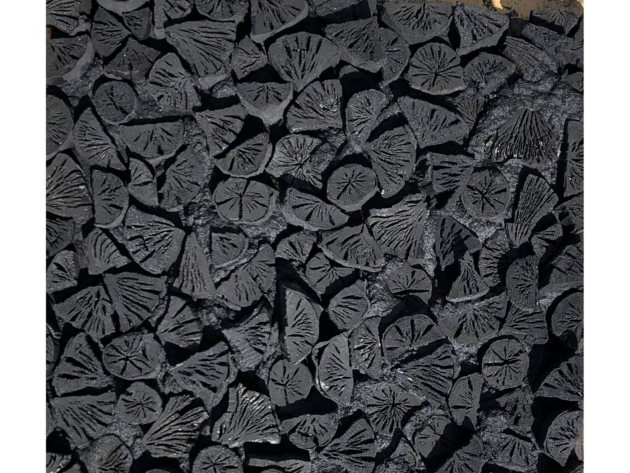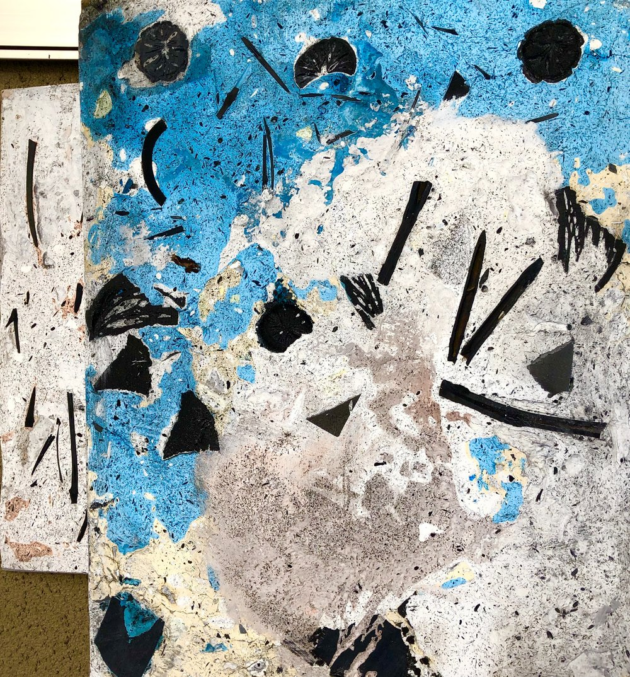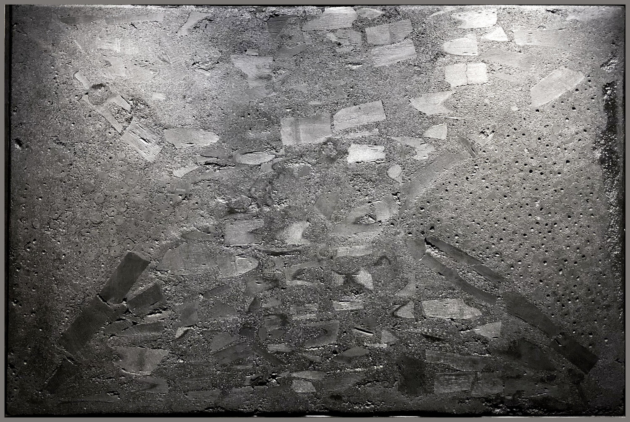
An interview with Hakama

The Kyoto-based artist known simply as Hakama uses sumi (charcoal) as his medium in creating innovative artworks with a subtle but impressive aesthetic imbued by direct use of natural materials transformed by fire.
His work was featured in KJ 107, ‘Fire & Kyoto,’ published in July 2024
How did you begin incorporating sumi into your artwork, and what materials were you using before that?
During my 27 years of living on Maui, we hosted a workshop for friends from Miyako Island who specialize in activated hemp charcoal. Through them, I gained valuable insights into the properties of charcoal, including its cleansing, purifying, and neutralizing effects, both physically and energetically. At the time, I was suffering from accidental chemical exposure, and charcoal was instrumental in detoxifying my system. This experience left a strong impression on me, sparking the desire to utilize charcoal in my artistic endeavors.

Before delving into sumi, acrylic was my primary medium for painting. However, the most significant influence came from immersing myself in Indonesia and India for eight years, and creating innovative textiles techniques (batik, dyeing and weaving) in the ‘70’s to ‘80’s. I explored various other artistic avenues, as well as sculpture, interior and clothing design, accessories, architectural designs, and even crafting electric guitars. I also created a Tarot deck known as Tarot de Paris, introducing a unique system in the process.
Why did you choose Kyoto as your home base?
Two years prior to relocating to Kyoto, while touring Japan to teach Tarot de Paris, my wife and I visited Kyoto and ventured to Shimyoin Temple in the Kumogahata mountains, the source of the Kamo River. As I entered a cave to offer prayers for water, I felt a profound resonance within myself and expressed to my wife my desire to settle in Kyoto. The natural surroundings resonated deeply with me, fulfilling a longing I had harbored for some time. Although we hadn’t made a definitive decision at that point, circumstances began aligning in a way that led us inexorably toward Kyoto. For me, it was a spiritual calling, compounded by the fact that my wife has ancestral ties to Kyoto. It felt as though the universe had orchestrated our journey to this culturally rich and spiritually significant city.

Why do you favor sumi as your artistic medium, and what aspects of the material appeal to you?
My move to Kyoto allowed me to delve deeper into the world of sumi charcoal, where I discovered the diverse range of sumi materials, each imparting distinct visual and energetic qualities to my artwork. I draw inspiration directly from the materials I encounter, and the process of experimentation with new materials never fails to surprise and delight me. The rich historical tradition of sumi in Japan further captivates me, as it is deeply ingrained in the country’s cultural fabric. Sumi artistry thrives here in a way that it wouldn’t elsewhere, adding to the allure of Kyoto as my artistic haven.
What challenges do you encounter when working with sumi?
Working with sumi presents its share of challenges, primarily due to the hardness of the material, which necessitates grinding—a physically demanding task that generates copious amounts of fine black powder. To protect myself, I must wear a full-body suit, along with eye protection and a mask, which is particularly challenging during the sweltering summers in Kyoto. Moreover, finding suitable workspace within the confines of the city poses additional logistical hurdles. Additionally, sourcing high-quality sumi materials is a consistently daunting task, requiring me to remain open to new suppliers and avenues.

Where do you source these materials, and have you ever attempted to produce your own?
While I’ve never personally produced sumi charcoal, I’ve established connections with sumi makers through a network of enthusiasts in Japan. Bamboo charcoal holds a special place in my artistic repertoire, renowned for its hardness and energetic properties. Given Japan’s abundance of bamboo forests, repurposing bamboo into charcoal not only serves as a sustainable practice but also yields a versatile material with myriad applications, from water purification to humidity regulation. Additionally, my exploration extends to various other materials, including rice husk charcoal, charcoal pellets, nut shells, denim, and seashells—each offering its own unique characteristics and possibilities. Currently, I’m collaborating with a bamboo charcoal maker nestled in the mountains of Kyoto, embracing the opportunity to fuse traditional craftsmanship with contemporary artistic expression.

Are there other artists who work with sumi, and who or what influences your artistic style?
While I’m not aware of other artists specifically working with sumi in the same capacity, my relocation to Kyoto exposed me to weathered cedar panels on buildings—a visual aesthetic that resonated deeply with me. As with my artistic process, my influences stem primarily from the materials themselves, which inspire and guide my creative endeavors.
How has your artwork been received by audiences?
The response to my sumi artwork has been overwhelmingly positive, often eliciting surprise and intrigue from viewers who are unfamiliar with the medium’s artistic potential. Despite sumi’s ubiquitous use in traditional Japanese practices such as cooking and heating, its application in fine art remains relatively novel to many. My pieces, with their inherent purification properties and ability to induce a sense of calm in viewers, have been particularly well-received. Furthermore, the interplay of light and shadow inherent in sumi artwork, coupled with its adaptability to various settings, ensures that each piece offers a unique and captivating viewing experience. Additionally, the symbolism of carbon inherent in sumi serves as a poignant reminder of our interconnectedness with the natural world.

Hakama is an American multimedia artist currently based in Kyoto, Japan. An intuitive and ceaseless explorer, Hakama’s creative pursuits have long been intertwined with a spirited life path. Undoubtedly influenced by the cultures and environments of the diverse locations he has called home over the years (India, Indonesia, Australia, Hawaii, Japan), Hakama has pushed his artistic explorations into new territory time and time again. Earlier works in his catalog include paintings, lithography, silk screen, monoprints, luggage/accessories and textiles as well as furniture design and sculpture. His works have received critical acclaim and have been acquired by private collections globally.
www.hakamaarts.com/